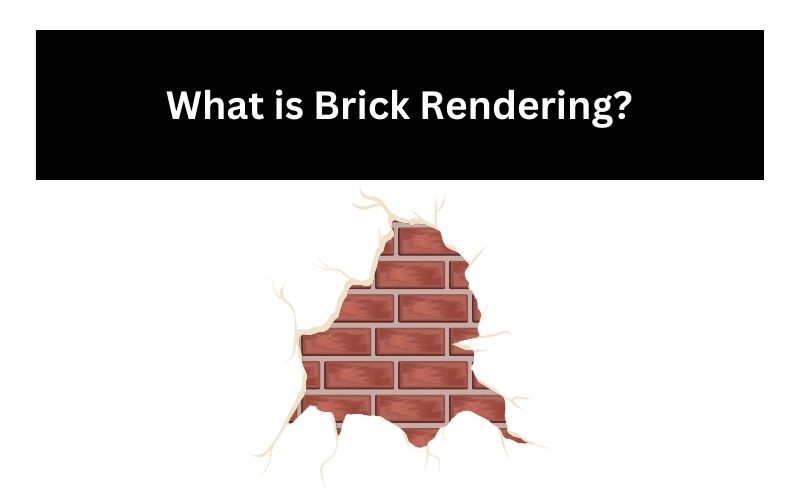I’ve been working in house rendering for several years, and I’ve learned a lot about the process. Brick rendering is a common way to make brick walls look better and last longer.
Brick rendering involves applying a mixture, usually cement, lime, or acrylic, to the outside of brick walls. This smooths the wall and gives it a modern, polished look. Besides making your house look nicer, rendering also protects the walls from cracks and wear, so you won't need to do as much maintenance.
So, what is rendered brick? A rendered brick is a brick that has been coated with a mixture applied to its exterior face. This process is usually done with cement but other popular options include lime and acrylic. Rendering smooths the wall, creating a more modern and lustrous appearance than traditional brickwork offers.
If you are considering whether rendered brick is suitable for your project, here are some of the advantages and considerations that come with rendering brick walls versus traditional brickwork.

Several techniques can be employed when rendering a brick wall. Each technique offers a different finish and level of protection.
This involves applying a base coat, known as a scratch coat, which is then scored to create a rough surface for the final coat to adhere to. This method ensures better adhesion and durability of the render.
After applying the render, a float is used to smooth the surface, followed by a sponge to create a fine texture. This technique is popular for achieving a clean, polished look.
Using a trowel, the render is applied and smoothed to achieve a sleek finish. This method is often used for a contemporary look.
The cost of brick rendering can vary depending on several factors, including the size of the area to be rendered, the type of render used, and the complexity of the job.
On average, you can expect to pay between £30 to £60 per square metre for brick rendering. This includes both materials and labour.
Choosing the right materials and tools is crucial for a successful brick rendering project.
Trowel: For applying and smoothing the render.
Hawk: To hold the render mix.
Float: For achieving a smooth finish.
Sponge: To create a fine texture on the final coat.
Finding a reliable brick rendering service near you is essential for a quality finish. When searching for a rendering service, consider the following:
Brick rendering can dramatically transform the appearance of your home. Before rendering, brick walls may appear old, worn, and weathered. After rendering, walls look fresh, modern, and well-protected. Viewing before and after photos of rendering projects can give you a better idea of the potential transformation.
From the various rendering techniques such as the scratch coat, float and sponge finish to the trowel finish each method brings a unique aesthetic and level of protection. The choice of materials—be it cement, lime, or acrylic—also plays a crucial role in determining the final look and durability of the rendered wall.
On average, you can expect to invest between £30 to £60 per square metre, a worthwhile expense given the long-term benefits of rendering.
A proper rendering mix, bonding agent, and waterproofing additives, along with essential tools like trowels, hawks, and sponges, ensure a smooth application and durable finish.
Rendering your brick walls offers several benefits, including protection from weather damage, improved insulation, enhanced aesthetic appeal, and the ability to cover imperfections in the brickwork.
There are various types of render, including smooth, textured, Tyrolean, and through-coloured. The best choice depends on your desired finish and the condition of your brickwork.
The cost of brick rendering varies depending on factors such as the size of the wall, the type of render used, and the complexity of the project. Typically, you can expect to pay anywhere from £20 to £50 per square metre.
While it's possible to DIY render, it's a skilled job. For a professional finish, it's often best to hire an experienced renderer.
The time required for brick rendering depends on the size of the wall and the complexity of the project. It can take anywhere from a few days to several weeks.
Maintaining a rendered wall is relatively easy. Regular cleaning with a soft brush and water is usually sufficient. Avoid using high-pressure water cleaners, as they can damage the render.
Yes, you can paint over rendered walls. However, it's essential to use a paint specifically designed for exterior use.
Small cracks in render are common and can usually be repaired with a patching compound. For larger cracks or persistent issues, it's best to consult a professional.